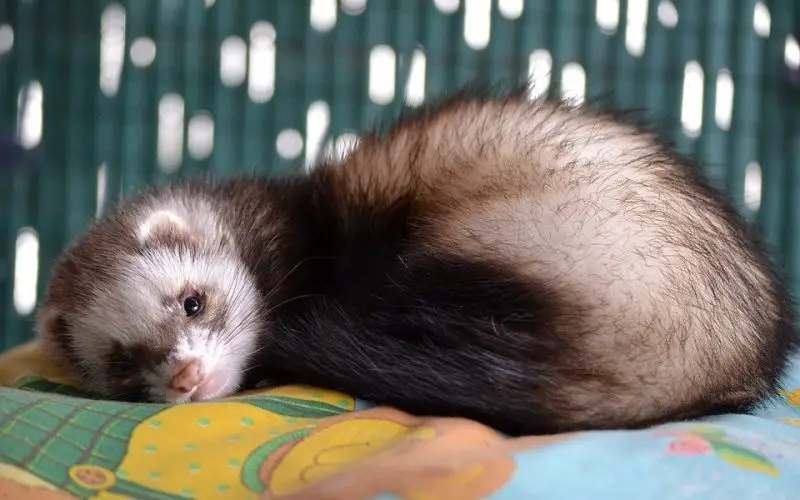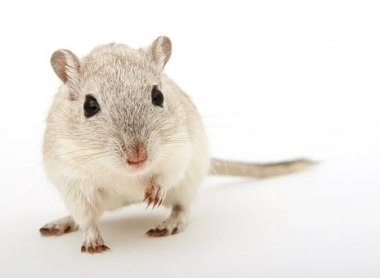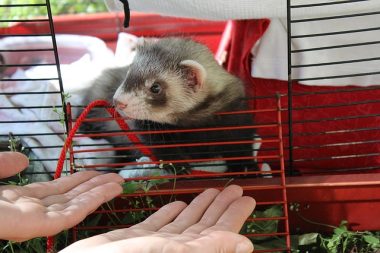Ferrets make for very extremely loving and sociable home pets. If you have the privilege of being a pet parent to these surprisingly social and friendly creatures, you may also, unfortunately, encounter occasions of progressive disease and terminal illness in ferrets. These occasions may require you to make a difficult and painful decision concerning euthanasia as your ferret’s quality of life deteriorates. Generally, the life expectancy of a ferret is anywhere between 5-10 years. On average, ferrets live up to about 8 years when kept as pets. However, there may come a time in your ferret’s life when burdened by the poor quality of life or deteriorating health, you may need to consider a more humane end-of-life approach through euthanasia.
Euthanasia, literally “good death” in Greek, is a kinder, more humane way to end your pet’s discomfort and pain towards the end of its natural life. Euthanasia is generally carried out in a licensed veterinarian’s office, preferably by a veterinarian who is familiar with your pet’s medical history. However, at-home euthanasia is gaining popularity across states in the U.S. for many reasons. These include providing a comfortable and safe home environment for your pet’s final moments. Euthanasia at home allows for a more personal and ceremonial farewell to your pets. It is also a practical option for pets with travel anxiety and in areas with an inaccessible veterinarian and crematory service, especially in remote towns and rural areas. This article explains how to safely and humanely euthanize a ferret at home so that it does not suffer.
When must you consider euthanasia for your ferret?
Euthanasia is a kind and humane way to help end your pet’s suffering and pain from a chronic, progressive, or terminal illness. No doubt, it is a difficult decision to make. Understandably, most pet parents use euthanasia as a last resort to bring a quick and painless death to their pets who are suffering. This is ideally done when there is little hope for improvement in symptoms or recovery. Euthanasia is the kindest option prescribed by veterinarians to end suffering in pets who are no longer able to enjoy a relatively good quality of life.
Ferrets are susceptible to terminal disease and illness and you must consider euthanizing your ferret if it can no longer enjoy a comfortable life. You may consider euthanizing your ferret at home if:
- It is unable to breathe properly from severe lung disease
- Is suffering from pain from cancerous tumors or masses
- Is incontinent and is unable to eliminate waste on its own
- Is blind, deaf, or experiences severe mobility issues
- Is unable to eat and drink on its own
- Shows signs of chronic lethargy, depression and is unable to socialize with other humans and pets in the home.
Nowadays, a sizeable number of veterinarians and pet hospice services are available to help you euthanize a ferret at home so that it does not suffer. These services are particularly helpful in cases where pets experience severe anxiety and fear of traveling to the veterinarian clinic or hospital. They are less stressful and provide an excellent opportunity for your ferret to pass peacefully in the comfort and familiarity of your home. Euthanizing your ferret at home also provides you with the opportunity to organize a personal and touching farewell or funeral ceremony for your pet. Unlike the confines of a clinic or hospital, at-home euthanasia provides a safe and comfortable space for you to mourn and grieve your ferret’s passing.
The process of at-home euthanasia to ease your ferret’s suffering
Despite the growing popularity of at-home euthanasia services, you must remember that this process is not for everyone. David Kirkpatrick, a spokesman for the American Veterinary Medical Association (AVMA), states that at-home euthanasia must only be performed by veterinarians and licensed euthanasia technicians. Only individuals registered with the U.S. Drug Enforcement Administration (DEA) can legally perform euthanasia using barbiturate solutions. In many states across the U.S., this requires a registered veterinarian to perform at-home euthanasia services.
It may be difficult to schedule a euthanasia session after your ferret’s prolonged battle with a chronic or terminal illness. It is important to plan the euthanasia session and related procedures well in advance. After consulting with your veterinarian if euthanasia is the best option for your ailing ferret, you may schedule an appointment and request your veterinarian to visit your home. If your veterinarian does not offer at-home euthanasia services, you can ask for a list of mobile vet practitioners who will be able to come home and help your ferret pass on.
A typical euthanasia appointment can last anywhere between 30 minutes to two hours depending on the nature of services and grief support offered. A veterinarian may be accompanied by a veterinarian technician or support staff to guide you through the process. The veterinarian will answer any questions you may have regarding the euthanasia process. You can use this opportunity to clear your doubts and any concerns that you may have for your ferret. They will then guide you through the relevant paperwork and consent forms and explain the euthanasia process in detail.
The euthanasia process begins by making sure that your ferret is in a quiet and comfortable space surrounded by familiar smells and people. Your veterinarian will shave a small patch of fur on one of your ferret’s front limbs to expose a vein. Next, your ferret will be sedated to ease its anxiety and distress. After about five minutes, the veterinarian will insert a cannula into the vein to inject the euthanasia solution – a high dose of barbiturate solution commonly used for anesthesia. As the veterinarian finishes injecting the solution, your ferret will lose consciousness. Its breathing will stop, its heart will stop beating and its brain will stop functioning. As ferrets are small animals, some veterinarians may find it easier and less stressful for the ferret to inject the euthanasia solution directly into one of the kidneys. Either way, the entire process of painless and humane.

Things to remember when euthanizing your ferret at home
Euthanizing your ferret at home can be a distressful reminder of the space where your pet passed away. It is always best that you plan a euthanasia session much in advance and work with your veterinarian to decide on the best course of action for your little pet. Dr. Kathleen Cooney, founder of Home to Heaven, an in-house pet hospice and euthanasia services provider says that 75% of her job is for the pet parents. This involves providing information, clearing doubts, and guiding pet parents through the process. Sometimes, if euthanasia is not carried through, Dr. Cooney also offers hospice services to the animal to prolong the quality of life.
But in most cases where euthanasia is inevitable, it always better to plan how to euthanize a ferret at home so that it does not suffer. This ensures that it is pain-free and comfortable for you and your ferret. Ace Ratcliffe and Dr. Derek Calhoon, founders of Harper’s Promise, have some great advice to make sure that neither you nor your ferret suffers through the euthanasia process at home. To make the process as comfortable as possible it is best to:
- In-home euthanasia is best done in consultation with our veterinarian. These services work as an adjunct to medical care and consultation. They are best used when your own veterinarian recommends euthanasia as the most appropriate option for your ferret.
- Determine a ‘compassionate time frame’ within which euthanasia is the kindest option to end your ferret’s suffering. In this time, as your ferret’s health declines, it will no longer be able to enjoy a good quality of life. This makes it necessary for you to choose a safe and humane option to relieve its pain.
- It is best to work with a veterinarian service provider who is kind and patient to answer all your questions and clarify doubts regarding the euthanasia process. You must be prepared to work through the process and have resources at hand for post-euthanasia procedures and grief support.
- Make sure your pet ferret is as comfortable as possible, surrounded by the things that make it feel safe such as its favorite toys and blankets. Your ferret will be less distressed and anxious when surrounded by familiar faces and smells at home. Keep all the resources you will need at hand to assist the veterinarian and veterinarian technicians. These include good lighting, adequate linen, pee pads, and water.
- In the last few moments of euthanasia, your ferret’s body will let out an ‘agonal gasp’ due to muscle spasms. Consequently, there will be muscle twitching, relaxation, and emptying of the bowels and bladder. These reactions are completely normal and you must be prepared to stay through the entire process, if you choose, to comfort your ferret and provide solace in its final moments.
- You will also need to decide if you would like to bury or cremate your ferret’s body. While burial may not be an option for everyone, you must check with your local authorities if it is permitted in your state. Always ensure that you bury the body at least 2 feet (0.61 m) or more below the surface to prevent the body from being dug up by scavenging animals. A cremation is a safe option for most pet parents. You may choose to cremate your ferret’s body and have its ashes returned to you in an urn. While this option is more expensive, you can also choose to do a group or communal cremation with other pets that have passed on. The ashes will not be returned to you and the crematory will respectfully scatter the ashes for you.
- In-home euthanasia provides a safe and familiar environment for your ferret and peaceful space for you to grieve in the comfort of your own home. Unlike a clinical setting, your home is an ideal space for your to spend your final moments with your ferret without it becoming awkward and time-bound.
- At-home euthanasia also offers you the opportunity to hold a ceremonial funeral for your ferret. You may choose to memorialize your ferret through a social or spiritual ceremony to help you grieve and receive support during this difficult time. In-home services offer the luxury of time unlike the brief time limitations of a hospital or clinic.
- Make sure to work with a veterinarian who you are familiar with and has taken the time to learn about your ferret’s history. Remember that it always best to work with a veterinarian to decide what is best for your pet ferret. However, if your ferret experiences distressed breathing or seizures, do not hesitate to visit the vet or rush to an emergency hospital. In such cases, at-home euthanasia may not be the best option and you will need to act quickly.
- Euthanasia is an emotionally difficult decision and you will need to decide if you or your family members, especially children, would like to be present during the entire process. It is advised for you to stay back as most pets search for their parents when left in the care of unfamiliar hands. Your presence will be comforting for your ferret.
- Lastly, at-home euthanasia can be an expensive process as it also involves the veterinarian service provider’s transport and contingency charges. You must be prepared in advance to bear these costs.
The decision of euthanizing your ferret is only yours to make. While your veterinarian may inform you about all possible options available for end-of-life care for your ferret, you will be the one to make the final decision. Euthanasia is definitely a difficult decision to make. It is advisable to talk to your partner, children, or other family members when making such an important decision to be prepared. It is understandable to feel grief and anger at your loss, thinking that there was probably more you could have done for your ferret. But the best thing that you can do for your ferret is to carefully plan euthanasia well in advance so that it does not suffer.








